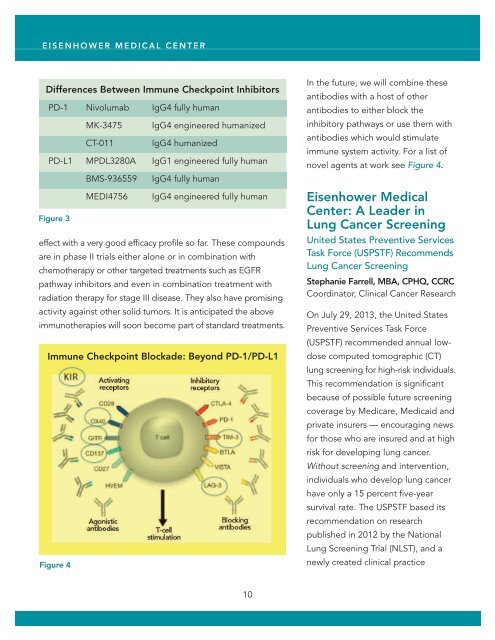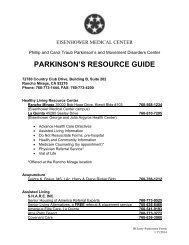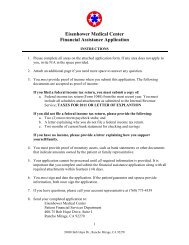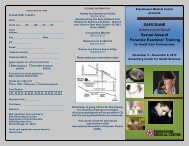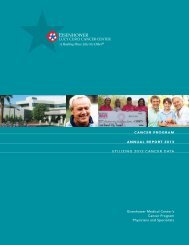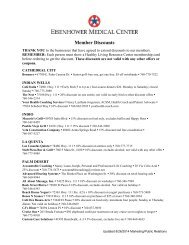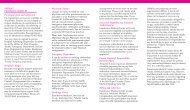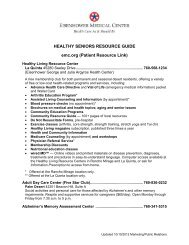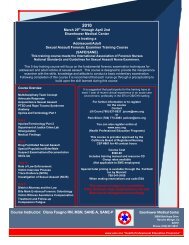Cancer Program Annual Report - Eisenhower Medical Center
Cancer Program Annual Report - Eisenhower Medical Center
Cancer Program Annual Report - Eisenhower Medical Center
Create successful ePaper yourself
Turn your PDF publications into a flip-book with our unique Google optimized e-Paper software.
E I S E N H O W E R M E D I C A L C E N T E R<br />
Differences Between Immune Checkpoint Inhibitors<br />
PD-1 Nivolumab IgG4 fully human<br />
MK-3475 IgG4 engineered humanized<br />
CT-011 IgG4 humanized<br />
PD-L1 MPDL3280A IgG1 engineered fully human<br />
BMS-936559 IgG4 fully human<br />
MEDI4756 IgG4 engineered fully human<br />
Figure 3<br />
effect with a very good efficacy profile so far. These compounds<br />
are in phase II trials either alone or in combination with<br />
chemotherapy or other targeted treatments such as EGFR<br />
pathway inhibitors and even in combination treatment with<br />
radiation therapy for stage III disease. They also have promising<br />
activity against other solid tumors. It is anticipated the above<br />
immunotherapies will soon become part of standard treatments.<br />
Immune Checkpoint Blockade: Beyond PD-1/PD-L1<br />
Figure 4<br />
In the future, we will combine these<br />
antibodies with a host of other<br />
antibodies to either block the<br />
inhibitory pathways or use them with<br />
antibodies which would stimulate<br />
immune system activity. For a list of<br />
novel agents at work see Figure 4.<br />
<strong>Eisenhower</strong> <strong>Medical</strong><br />
<strong>Center</strong>: A Leader in<br />
Lung <strong>Cancer</strong> Screening<br />
United States Preventive Services<br />
Task Force (USPSTF) Recommends<br />
Lung <strong>Cancer</strong> Screening<br />
Stephanie Farrell, MBA, CPHQ, CCRC<br />
Coordinator, Clinical <strong>Cancer</strong> Research<br />
On July 29, 2013, the United States<br />
Preventive Services Task Force<br />
(USPSTF) recommended annual lowdose<br />
computed tomographic (CT)<br />
lung screening for high-risk individuals.<br />
This recommendation is significant<br />
because of possible future screening<br />
coverage by Medicare, Medicaid and<br />
private insurers — encouraging news<br />
for those who are insured and at high<br />
risk for developing lung cancer.<br />
Without screening and intervention,<br />
individuals who develop lung cancer<br />
have only a 15 percent five-year<br />
survival rate. The USPSTF based its<br />
recommendation on research<br />
published in 2012 by the National<br />
Lung Screening Trial (NLST), and a<br />
newly created clinical practice<br />
10


